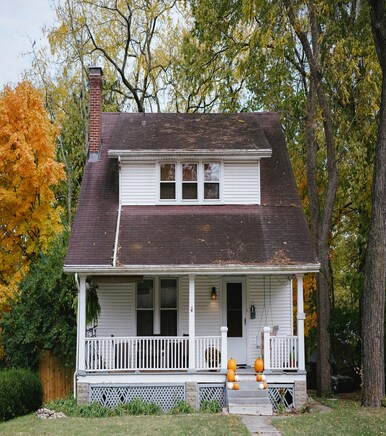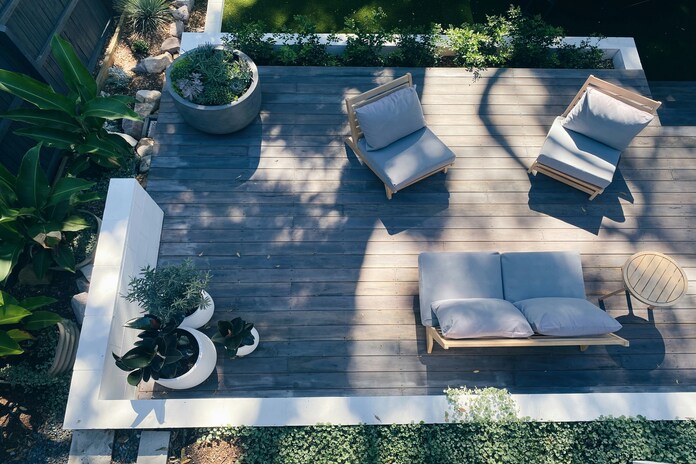Deck or Patio? Making the Best Choice for Your Home
When it comes to enhancing your outdoor living space, the age-old debate between building a deck or a patio can be quite a conundrum. Both options offer unique benefits and potential drawbacks, making the decision challenging for many homeowners. This blog post aims to help you make an informed choice by exploring the key factors, benefits, and design inspirations for both decks and patios.
 The decision to build a deck or patio is not just about aesthetics; it’s about functionality, cost, maintenance, and how each option fits into your lifestyle and environment. Whether you aim to create a cozy space for family gatherings, a stylish area for entertaining guests, or a peaceful retreat to unwind, this guide will help you understand the pros and cons of each option.
The decision to build a deck or patio is not just about aesthetics; it’s about functionality, cost, maintenance, and how each option fits into your lifestyle and environment. Whether you aim to create a cozy space for family gatherings, a stylish area for entertaining guests, or a peaceful retreat to unwind, this guide will help you understand the pros and cons of each option.
Benefits and Drawbacks
Decks
Benefits
Decks are a fantastic way to add elevation to your outdoor space, offering stunning views and creating a seamless transition from indoors to outdoors. Being elevated, decks can be built on uneven terrain, making them versatile for various landscapes. They are also typically quicker and easier to install than patios, especially if your home sits on a slope.
Drawbacks
However, decks do come with their own set of challenges. Wood decks require regular maintenance to prevent issues like rot, warping, and insect damage. Even composite materials, though less maintenance-intensive, can still be prone to mold and mildew. Additionally, the initial cost of building a deck is often higher compared to a patio.
Patios
Benefits
Patios, on the other hand, offer a solid and durable option for ground-level outdoor spaces. They are typically constructed from materials like concrete, stone, or pavers, which are resilient and can withstand various weather conditions. Patios are also incredibly versatile in terms of design and can be customized to fit any shape or size.
Drawbacks
One significant drawback of patios is their requirement for relatively flat terrain. If your yard is uneven, leveling it for a patio can add to the cost and complexity of the project. Additionally, some materials used for patios can crack over time due to ground movement or harsh weather conditions, necessitating repairs.
 Considerations Before Building
Considerations Before Building
Intended Use
What do you envision for your outdoor space? A deck might be more suitable if you plan to host large gatherings, as it offers a larger, more open area. Patios, with their proximity to the ground, can create a more intimate setting for smaller groups or quiet relaxation.
Local Building Codes
Before deciding, it’s crucial to check your local building codes and regulations. Some areas have specific requirements for decks and patios, including permits, material restrictions, and distance from property lines. Understanding these regulations can save you time and potential legal issues down the road.
Impact on Property Value
Both decks and patios can increase your home’s value, but the impact can vary. Generally, a well-built deck can offer a higher return on investment, especially if it enhances the aesthetic appeal and functionality of your home. Patios, while potentially less impactful on resale value, can still add significant appeal, particularly if they are well-integrated into your landscaping.
Design Inspiration
Deck Designs
Modern deck designs often incorporate multi-level layouts, built-in seating, and even outdoor kitchens. A minimalist design with sleek railings and neutral tones can create a contemporary feel, while a rustic wooden deck with pergolas and planters can evoke a cozy, cabin-like atmosphere.
Patio Designs
Patios offer endless design possibilities, from intricate paver patterns to smooth, polished concrete surfaces. Consider adding elements like fire pits, water features, or outdoor furniture to enhance the space. A Mediterranean-style patio with terracotta tiles and lush greenery can transport you to a tranquil oasis right in your backyard.
Environmental Impact
Materials Used
When considering the environmental impact, the materials you choose play a significant role. Wood decks, especially those made from responsibly sourced timber, can be eco-friendly, but they require treatments that may not be. Composite decking, made from recycled materials, offers a greener alternative. For patios, natural stone and permeable pavers allow water to filter through, reducing runoff and promoting groundwater recharge.
Long-term Sustainability
Long-term sustainability is another factor. Decks, if maintained properly, can last for decades but may need more frequent repairs. Patios, built with durable materials, generally require less maintenance and have a longer lifespan, making them a more sustainable option in the long run.
Deciding whether to build a deck or patio ultimately comes down to your personal needs, preferences, and the specific characteristics of your property. Both options offer fantastic opportunities to enhance your outdoor living space and add value to your home.
For a seamless start to your project, consider consulting with reputable contractors who can provide expert advice tailored to your situation. Remember, the goal is to create a functional, beautiful, and sustainable space that you’ll enjoy for years to come.
We’d love to hear your thoughts and experiences. Have you built a deck or patio? Share your insights and questions in the comments below, and don’t forget to check out our related content for more inspiration and advice on outdoor living spaces.


 Considerations Before Building
Considerations Before Building

